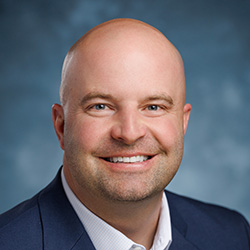Article 2 in the ACA Cost Mitigation series
Faced with limited resources, school districts and other local governmental employers must look for new opportunities to save on health benefits due to likely 2014 increases caused by the Affordable Care Act (ACA). Even if your organization is constrained by bargained contracts or other retirement promises, viable solutions exist. One significant cost-reducing strategy is to restructure retiree benefits.
The hidden cost of keeping retirees on your health plan
Keeping retirees on your health plan comes at a significant cost even if the retirees are paying 100% of their premiums. Why? Because the retirees’ ages inflate the overall cost of the plan.
For example, the true age-related premium for a retiree could be as much as $16,000 as compared to $8,000 for an active employee. The employer and active employees are essentially subsidizing the retirees’ health insurance.
It has been estimated that removal of retirees could reduce the health plan cost by as much as 20%.
Restructuring retiree benefits without re-negotiating contracts
The new ACA mandates do not require employers to offer retiree health insurance coverage beyond COBRA, or 18 months. Nor does ACA require employers to make any contribution to retiree premiums.
Regardless of the lack of ACA requirements, if your contract specifies retiree coverage, then you are obligated to provide it. However, that usually doesn't mean retirees have to stay on the active employees’ plan. In most cases, you can either require retirees to find coverage elsewhere or provide incentives for them to do so.
An HRA, Health Reimbursement Arrangement, allows an employer contribution on behalf of the retiree to be used tax-free for medical premiums. An employer can simply deposit the contracted amount for each retiree into an HRA account. Not only does this cap the contribution amount (rather than be subjected to health insurance increases), it also relieves the employer from the administrative burdens of paying retiree premiums, which can be time-consuming and difficult if you have limited staff.
Where do my retirees get heath coverage if I don’t offer it?
Up until now there hasn’t been a viable option for retirees. However, Health Insurance Marketplace (previously known as Health Insurance Exchanges) will be certified and operational in every state by January 1, 2014, and will provide standardized health care plans for which retirees can purchase health insurance. In fact, retirees who earn less than 400% of the Federal Poverty Level (under $44,000 for a single retiree and $88,000 for a couple) will be eligible for a premium subsidy.
Case Examples:
Solution Option 1: Retirement incentive
Elmwood School District allowed retirees to continue on their health plan until Medicare eligibility, but did not contribute toward their premiums. After receiving a quote of their health plan without retiree participation, the school district realized that even though they were not contributing toward retiree premiums, they were still in essence subsidizing the retirees because of increased premiums due to participant age. To combat this problem, Elmwood Schools started offering a $4,000 annual HRA contribution for those employees who retired within an established window of time. The HRA plan document specified that funds could only be used for medical insurance premiums and excluded the employer’s health plan. The HRA was funded from a portion of the realized savings by reducing retiree participation.
Solution Option 2: Moving retirees off the employee health plan
The City of Juniper annually contributed $6,000 for single retiree health insurance premiums and $12,000 for retiree plus spouse plans. They designed an HRA plan where funds were limited to medical premiums excluding the employer plan and provided contributions into the HRA instead. The city did not incur any additional cost, but did achieve significant savings when retirees were removed from their health plan.
Solution Option 3: Transition to a defined contribution
Jackson County School District currently pays 75% of the retiree health insurance premiums during the first year of retirement. Since the contribution is tied to a percentage, the amount increases every year as health insurance premiums rise. This contributes toward a large GASB 45 liability as determined by an actuarial valuation.
As a hedge against the increasing costs and to decrease the GASB 45 liability, the district converts their contribution percentage into a fixed dollar amount and provides the benefit to retirees in an HRA. The HRA plan document, as in previous examples, specifies that funds be used only for medical insurance premiums excluding the employer plan. The first year, Jackson County School District estimated their savings to be $8,000 per single retiree and $16,000 on retiree plus spouse participants. In the second and subsequent years, the annual savings increased.
For a more detailed explanation of how to reduce the cost of health insurance employing Retiree Benefit Restructuring alternatives please contact David Branback.
National Insurance Services is not a law firm and no opinion, suggestion, or recommendation of the firm or its employees shall constitute legal advice. Readers are advised to consult with their own attorney for a determination of their legal rights, responsibilities and liabilities, including the interpretation of any statute or regulation, or its application to the readers’ business activities.



